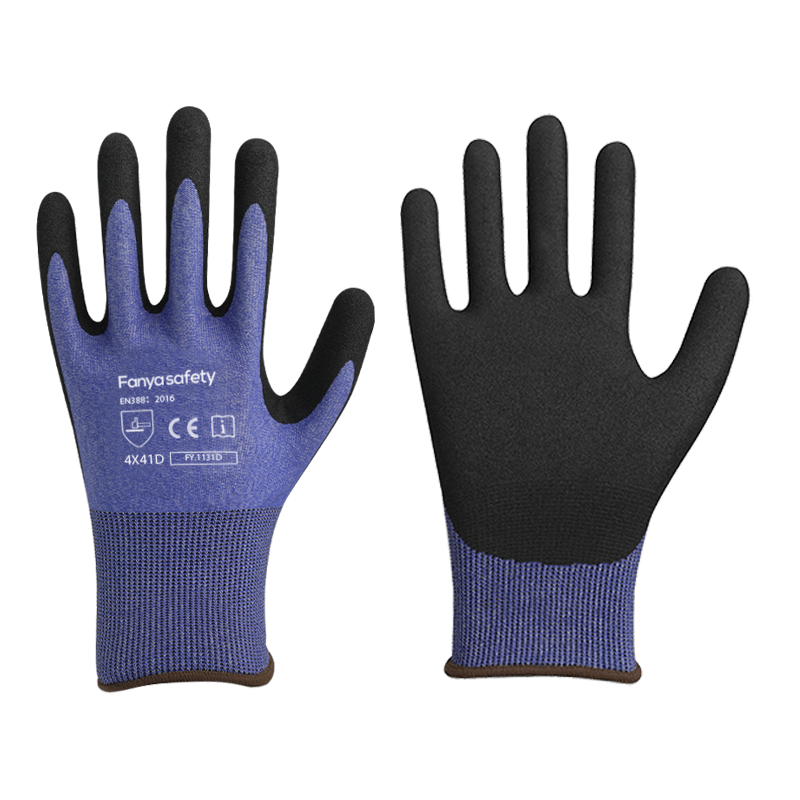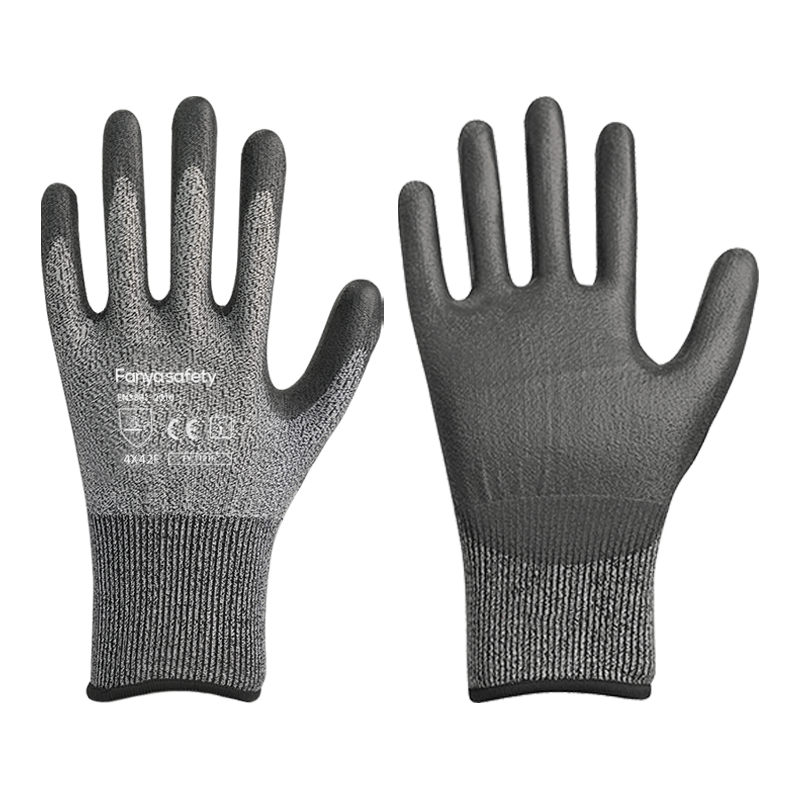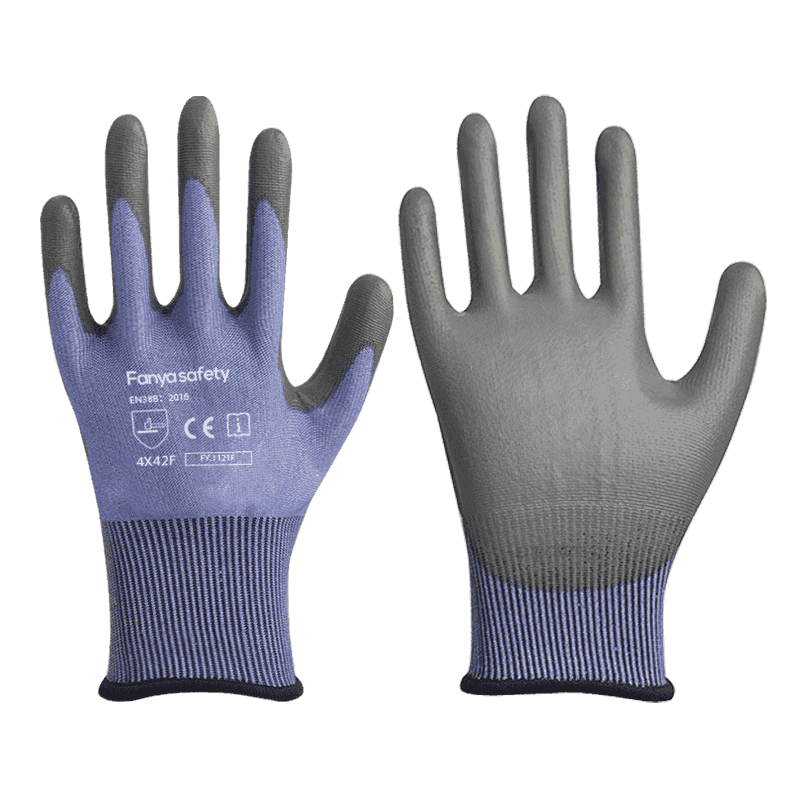Product Consultation
Your email address will not be published. Required fields are marked *
Content

Cut-resistant gloves are a vital piece of personal protective equipment (PPE) designed to protect the hands from cuts, abrasions, and other injuries caused by sharp objects, tools, and hazardous work environments. These gloves are widely used in industries such as construction, manufacturing, food processing, and emergency response. This guide provides a comprehensive overview of cut-resistant gloves, their features, standards, selection criteria, and practical applications.

Cut-resistant gloves are specialized gloves designed to protect the hands from cuts, scrapes, and punctures. They are made from materials that are resistant to cuts and tears, such as high-strength fibers like Dyneema®, Kevlar®, glass, and synthetic blends. These materials are woven or layered to create a barrier against sharp objects and sharp edges.
Cut-resistant gloves are essential in industries where workers are exposed to sharp tools, cutting implements, or hazardous materials. Examples of such industries include:
These gloves help reduce the risk of workplace injuries, such as cuts, lacerations, and punctures, which can lead to time off work, medical expenses, and potential legal liabilities.
| Feature | Description |
| Cut Resistance | Cut-resistant gloves are designed to resist cuts from sharp objects such as knives, blades, and sharp tools. The level of cut resistance is often measured using standards such as ANSI/ISEA and EN 388, which provide ratings for cut resistance, abrasion resistance, tear resistance, and puncture resistance . |
| Material | Cut-resistant gloves are often made from high-performance materials such as Kevlar, Dyneema, and stainless steel mesh, which offer excellent resistance against cuts and abrasions while maintaining dexterity . |
| Comfort and Fit | A well-fitting glove is essential for both comfort and safety. Gloves that are too tight or too loose can reduce dexterity and increase the risk of injury . |
| Additional Features | Some gloves may offer additional features such as chemical resistance, heat resistance, or enhanced grip . |
| Durability and Performance | Cut-resistant gloves are designed to be durable and long-lasting, with features such as high-spec HPPE yarn enhancing comfort, tactile sensitivity, and dexterity . |
| Standards and Testing | Cut-resistant gloves are evaluated based on specific standards to ensure they meet certain levels of performance, such as ANSI/ISEA and EN 388 standards . |
Cut-resistant gloves are made from high-performance materials that are specifically designed to resist cuts and tears. These materials include:
These materials are often woven or layered to create a barrier against sharp objects. The weave pattern and thickness of the material determine the level of cut resistance.
To ensure that cut-resistant gloves meet industry standards, they are tested using specific protocols and standards. These tests measure the cut resistance level of the glove material. Some of the most common standards include:
These standards help ensure that cut-resistant gloves meet industry requirements and are safe for use in various environments.
| Cut Resistance Level | Description | Typical Applications |
| A1 to A3 | Light to medium cut protection | Light-duty tasks, general work |
| A4 to A5 | Medium to heavy cut protection | Medium-duty tasks, moderate hazards |
| A6 to A9 | High to extreme cut protection | Heavy-duty tasks, high-risk environments |
| Level 6 to 7 | High-cut hazards | Metal processing, heavy industry |

Cut-resistant gloves can be classified based on the materials used in their construction:
Cut-resistant gloves can also be classified based on their intended application:
| Type of Cut-Resistant Glove | Materials Used | Key Features | Applications |
| Kevlar Gloves | Kevlar, Spectra, Dyneema | High cut resistance, used in bulletproof vests | High-risk environments, construction, metalwork |
| HPPE (High-Performance Polyethylene) Gloves | HPPE, Stainless Steel, Spandex, Polyester | Good balance of cut resistance and flexibility | Food production, general industry |
| Metal Mesh Gloves | Stainless Steel | High cut resistance, rigid | Meat processing, high-risk tasks |
| Nitrile-Coated Gloves | Nitrile, Coated | Good cut resistance and chemical resistance | General industry, food processing |
| Cut-and-Sewn Gloves | Cut-resistant materials | Cut-resistant palm linings | General use, moderate cut hazards |
| Seamless Knitted Gloves | Cut-resistant materials | Comfortable, flexible | General use, moderate cut hazards |
| Cut-Resistant Level Gloves | ANSI Levels A1 to A9 | Rated by ANSI/ISEA standards | Specific cut resistance levels for different tasks |
When selecting cut-resistant gloves, several factors should be considered to ensure that the gloves meet the needs of the user and the requirements of the job:
Proper sizing is crucial for comfort and effectiveness. Gloves that are too small or too large can lead to reduced dexterity, discomfort, and even injury. When selecting gloves, ensure that they fit snugly but comfortably and allow for full movement of the fingers and thumb.
| Step/Consideration | Details |
| 1. Assess the Application and Risk | Identify potential hazards and assess the likelihood and severity of cut-related injuries. Consider the specific tasks, equipment, and environmental factors that may pose risks . |
| 2. Understand Standards and Regulations | Familiarize yourself with international standards such as ANSI/ISEA 105-2016 and EN 388:2016, which define cut resistance levels and provide guidelines for selecting appropriate gloves . |
| 3. Match Gloves to Applications | Select gloves based on the identified hazards and risk levels. Consider the specific application and the gloves' cut resistance, tear, and puncture resistance . |
| 4. Consider Cut Resistance Levels | Cut resistance levels are often categorized using systems like ANSI (A1-A9) or EN 388 (0-5), where higher numbers indicate greater protection . |
| 5. Material and Fit | Consider the material (e.g., Kevlar, Dyneema, synthetic fibers) and ensure the gloves fit comfortably and are breathable. A good fit ensures safety and comfort . |
| 6. Additional Features | Look for features like grip enhancement, hypoallergenic materials, and touchscreen capability. Consider durability and longevity . |
| 7. Maintenance and Care | Proper maintenance, including inspection, cleaning, and storage, is essential to extend the life of the gloves . |
To ensure the maximum effectiveness of cut-resistant gloves, they should be used and maintained properly:
Proper maintenance is essential to extend the life of the gloves and ensure their continued effectiveness:
| Step/Consideration | Details |
| 1. Proper Use | - Wear gloves that fit securely and comfortably, covering the entire hand .- Remove gloves by grasping the cuff and gently peeling them off to avoid contamination . |
| 2. Cleaning and Maintenance | - Follow manufacturer’s instructions for cleaning, typically using mild soap and warm water .- Avoid using harsh chemicals or bleach that can degrade the materials . |
| 3. Inspection and Storage | - Regularly inspect gloves for signs of wear, such as fraying or thinning, and replace when necessary .- Store gloves in a cool, dry place away from direct sunlight and chemicals . |
| 4. Proper Handling | - Avoid exposure to sharp edges or abrasive surfaces that could damage the gloves .- Rotate gloves if used frequently to extend their lifespan . |
| 5. Cleaning and Sanitization | - Wash gloves regularly, especially after tasks involving sharp objects or food handling .- Follow manufacturer's instructions for cleaning and sanitizing . |
| 6. Disposal and Replacement | - Dispose of gloves according to local regulations, especially if contaminated .- Replace gloves when signs of wear or reduced performance are noticed . |
Cut-resistant gloves are widely used in industrial environments where workers are exposed to sharp tools and materials:
Cut-resistant gloves are also used in a variety of other industries and applications:

While cut-resistant gloves are an essential part of workplace safety, there are several common challenges that users and employers may face:
To address these challenges, several solutions and best practices can be implemented:
| Challenge | Solution |
| Material Degradation | Use high-quality materials like Kevlar, Dyneema, or synthetic fibers that offer superior cut resistance and durability . |
| Fit and Comfort Issues | Ensure gloves are properly sized and fit comfortably to enhance dexterity and reduce discomfort . |
| Limited Cut Resistance | Select gloves with appropriate cut resistance levels (e.g., EN 388 or ANSI/ISEA standards) to match the level of risk in the workplace . |
| Wear and Tear | Regularly inspect gloves for signs of wear and replace them when necessary to maintain effectiveness . |
| User Training and Awareness | Provide proper training on the use and maintenance of cut-resistant gloves to ensure consistent and correct usage . |
| Environmental Factors | Choose gloves suitable for specific environments (e.g., wet or dry conditions) and materials that resist chemicals and abrasion . |
While both types of gloves are designed to protect against sharp objects, there is a subtle difference in their focus and application:
In many cases, cut-resistant gloves also offer puncture resistance, but the primary focus of each type of glove may differ based on industry standards and application.
The frequency of replacement for cut-resistant gloves depends on usage, wear and tear, and the level of cut resistance. As a general guideline:
Many cut-resistant gloves are water-resistant or waterproof, making them suitable for wet or oily conditions. However, extended exposure to water or oils can affect the integrity of the material, especially if the gloves are not properly maintained. It is recommended to follow the manufacturer’s care instructions for proper cleaning and storage.
While cut-resistant gloves are designed to protect against physical hazards, there are minimal health risks associated with their use. However, extended use of gloves can lead to skin irritation or allergic reactions in some individuals. It is recommended to choose gloves made fromhypoallergenic materialsand torotate between different types of glovesto reduce the risk ofskin issues**.
ANSI/ISEA and EN 388 are two of the most widely recognized standards for cut-resistant gloves, but they are regional and international standards, respectively:
While both standards aim to measure cut resistance, the testing methods and classification systems may differ slightly, but they are complementary and often used together in global markets.
Background: A construction company in the United States was experiencing a high rate of workplace injuries due to cuts and lacerations from sharp tools and materials. The company was seeking to improve worker safety and reduce the number of workplace injuries.
Solution: The company implemented a comprehensive PPE program, including the use of cut-resistant gloves for all workers involved in cutting, grinding, and handling sharp materials.
Outcome: Within one year, the company reported a 30% reduction in workplace injuries related to cuts and lacerations. Workers also reported improved comfort and dexterity when using the cut-resistant gloves, leading to increased productivity and job satisfaction.
Background: A food processing plant in Europe was experiencing high rates of cuts and injuries among food handlers due to sharp knives and cutting tools. The company was seeking to improve worker safety and reduce the number of workplace injuries.
Solution: The company implemented a PPE program, including the use of cut-resistant gloves for all workers involved in food preparation and processing.
Outcome: Within six months, the company reported a 40% reduction in workplace injuries related to cuts and lacerations. Workers also reported improved comfort and dexterity when using the cut-resistant gloves, leading to increased productivity and job satisfaction.
Background: A manufacturing company in Asia was experiencing high rates of cuts and injuries among machinists and assembly workers due to sharp tools and materials. The company was seeking to improve worker safety and reduce the number of workplace injuries.
Solution: The company implemented a comprehensive PPE program, including the use of cut-resistant gloves for all workers involved in machining, assembly, and fabrication.
Outcome: Within one year, the company reported a 25% reduction in workplace injuries related to cuts and lacerations. Workers also reported improved comfort and dexterity when using the cut-resistant gloves, leading to increased productivity and job satisfaction.
The use of cut-resistant gloves is governed by a range of international and regional standards that ensure product safety, performance, and compliance. These standards are developed by regulatory bodies and industry organizations to ensure that PPE products meet minimum safety requirements.
Compliance with these standards and certifications is crucial for several reasons:

As awareness of environmental issues grows, the sustainability of cut-resistant gloves is becoming an important consideration.
The effective use of cut-resistant gloves depends on proper education and training.
The effective management of the supply chain is crucial for the availability and accessibility of cut-resistant gloves.
The effective use of cut-resistant gloves is influenced by international trade and trade agreements.
The effective use of cut-resistant gloves is influenced by global health and safety initiatives.
The effective use of cut-resistant gloves is influenced by innovation in the field.
The effective use of cut-resistant gloves is increasingly influenced by environmental sustainability initiatives. As global awareness of environmental issues grows, the sustainability of cut-resistant gloves is becoming a key consideration for manufacturers, users, and regulators.

The effective use of cut-resistant gloves has a significant impact on the global economy, particularly in industrialized and developing countries.
Cut-resistant gloves are an important part of occupational safety and health. They help reduce the risk of workplace injuries and improve worker productivity. By using cut-resistant gloves, employers can create a safer and more efficient workplace.
To ensure that cut-resistant gloves meet industry standards and requirements, they should be certified and tested according to recognized standards such as ANSI/ISEA, EN 388, and CE. These standards help ensure that the gloves are safe and effective for use in various environments.
The field of cut-resistant gloves is continuously evolving, with new technologies and materials being developed to enhance performance and functionality:
As awareness of environmental issues grows, the sustainability of cut-resistant gloves is becoming an important consideration:
Your email address will not be published. Required fields are marked *
You can contact to me using this form.
